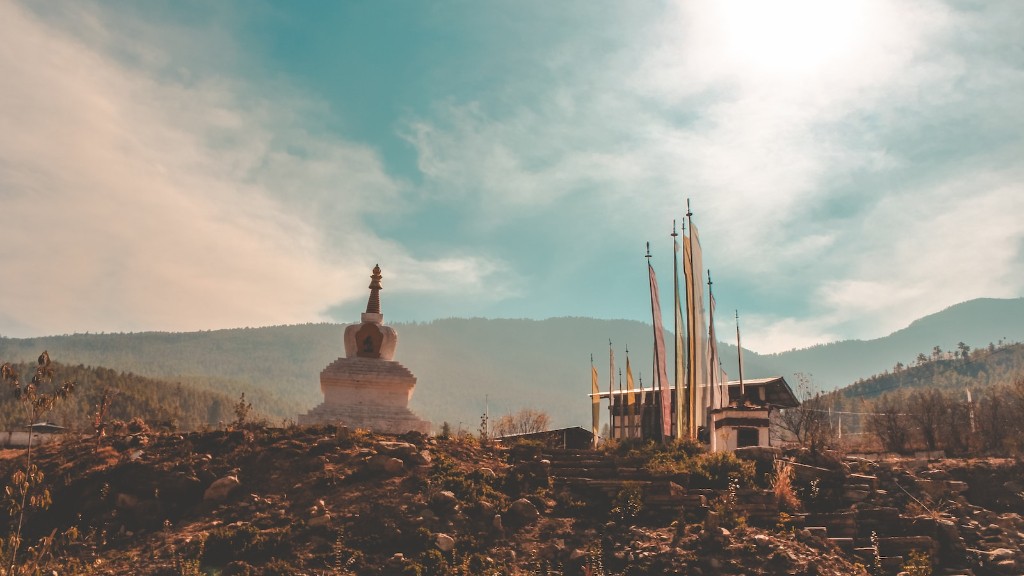Introduction
The four Vedas—Rig, Yajur, Sama, and Atharva—are the four primary texts of Hinduism. Dating back to the early Iron Age, before 1000 BC, they remain the sacred scriptures of the religion to this day. Compiled in Vedic Sanskrit, the texts contain a variety of material, such as hymns, incantations, rituals, commentaries and guidance on living, ethics and philosophy. Believed to be the source of all knowledge, the Vedas are venerated and studied by millions of Hindus.
Rig Veda
The Rig Veda is the oldest and most important text in the four Vedas. It consists of 1,028 hymns or suktas, invoking the gods and goddesses for spiritual rewards and material prosperity. Thought to have been orally recited for centuries before being written down in about 1000 BC, it is seen as a divine source of wisdom and an essential book of knowledge.
Yajur Veda
The Yajur Veda is the second oldest of the four Vedas. Compiled around 900 BC, it contains sacrificial rituals, mantras, spells and prayers to be used during offerings to the deities. It is written in prose, and unlike the Rig Veda, which is meant to be recited, it is a guide by which priests can execute rituals correctly and correctly make offerings to the gods.
Sama Veda
The Sama Veda is the third of the four Vedas. It is composed primarily of hymns from the Rig Veda, though some of its content is original. The hymns are set to music and sung in rituals. It is believed that by singing the hymns, harmony with the Brahmā, the Creator, is achieved.
Atharva Veda
The Atharva Veda is the youngest of the four Vedas, with content dating back to between 1000 and 600 BC. It contains hymns and mantras believed to possess magical powers. In addition to being studied by priests, the Atharva Veda was also consulted by laypeople for its magical properties, such as charms and incantations to protect from danger and attract prosperity.
Rituals and Practices
The Vedas provide guidance on a variety of rituals and practices, including offerings to the gods, spiritual ceremonies, marriage, and other aspects of life. They also give detailed instructions on performing yajñas, a type of fire sacrifice offering to the gods. While many of these rituals are still performed today, their meanings have evolved over time and most have been adapted to fit the changing social context.
Concept of Brahman
A major concept in the four Vedas is that of Brahman, an uncreated and infinite Supreme Being, which is seen as the source of all life. According to the Vedas, Brahman is formless and omnipresent, and it is thought that by seeking knowledge and developing devotion to the Lord, one can attain mokṣa, or spiritual liberation.
Relevance Today
Although the four Vedas were written over two millennia ago, they still have relevance in modern day Hinduism. They are studied in temples, homes and educational institutions, and millions of Hindus around the world recite them daily. For many, the Vedas are essential scriptures, providing guidance on spiritual and material matters. They are seen as a valuable source of ancient wisdom and are revered by Hindus as the infallible word of God.
Significance of Language
Vedic Sanskrit is the language of the four Vedas, and is one of the oldest attestable Indo-European languages. It is a liturgical language and is thought to be derived from Proto-Indo-European, the ancient ancestor of most languages in the Indo-European family. Because the Vedas are written in this ancient language, they are seen as a way to connect to the ancient roots of Hinduism and its culture.
Transmission and Preservation
India has a long oral tradition and the Vedas were most likely orally composed and recited for centuries before being written down. Buddhists and Jains were among the first to preserve the Vedas and convert them into written texts. After the emergence of written texts, the Vedas were memorized by generations of learned men who passed them down for thousands of years.
Authorship
The authors of the four Vedas are unknown. Some believe that they could have been penned in their entirety by one person, or that parts of them are the work of many authors. According to Hindu mythology, the Vedas were revealed to sages and rishis by the gods, who also inspired them to chant and write the sacred texts.
Meaning of Vedas
The term Veda comes from the Sanskrit word vid, which means “knowledge”. Vedas are therefore seen as a source of knowledge and the sacred texts of Hinduism. They are venerated as the embodiment of truth, and are believed to be timeless and eternally valid. Furthermore, the Vedas are believed to be beyond human comprehension, and so seeking to understand their deeper meanings is seen as an act of devotion and piety.

